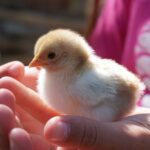Giongo and Gitaigo (Onomatopoeia)
Giongo and Gitaigo
擬音語と擬態語
Up to now, I introduced several times about Japanese giongo (擬音語) / giseigo (擬声語) and gitaigo (擬態語).
http://lang-8.com/kanotown/journals/86267710602984537206970840486887149264
http://lang-8.com/kanotown/journals/86267710602984537206970840486887149264
これまで、私は日本語の擬音語(擬声語)や擬態語について、何度か投稿してきました。
Both of them can be translated into English as onomatopoeia, but there is a clear difference in the way of use.
これらはどちらも ‘onomatopoeia’ と英語に訳されますが、明確な使い方の違いがあります。
Giongo/giseigo is a term that represents an actual sound caused by people, animal, or things.
For example, a dog’s bark is “wan wan” (ワンワン), and a sound of thunder is “goro goro” (ゴロゴロ).
For example, a dog’s bark is “wan wan” (ワンワン), and a sound of thunder is “goro goro” (ゴロゴロ).
擬音語は、人や動物、物が発する音を言葉で表現したものです。
例:ワンワン(犬の鳴き声)、ゴロゴロ(雷の鳴る音)
例:ワンワン(犬の鳴き声)、ゴロゴロ(雷の鳴る音)
On the other hand, gitaigo represents someone’s/something’s state or emotion that doesn’t generate any sound.
For example, something shining/new/beautiful is “kira kira” (きらきら), and staring at someone’s face or something is “jiro jiro” (じろじろ).
一方で擬態語は、状態や感情などの音を発しないものを文字で表現したものです。
例:ぴかぴか(光っている/新しい/綺麗な様)、じろじろ(人の顔などを見つめるさま)
例:ぴかぴか(光っている/新しい/綺麗な様)、じろじろ(人の顔などを見つめるさま)
It might be hard for foreigner to understand gitaigo, but it’s necessary in our daily conversation.
外国人が日本語の擬態語を理解するのは難しいかもしれませんが、我々の日常会話で擬態語は欠かせないものとなっています。
From now on, I will sometimes write about Japanese gitaigo, adding a tag “onomatopoeia.”
今後、’onomatopoeia’ というタグを付けて、たまに日本語の擬態語を紹介していこうと思います。




